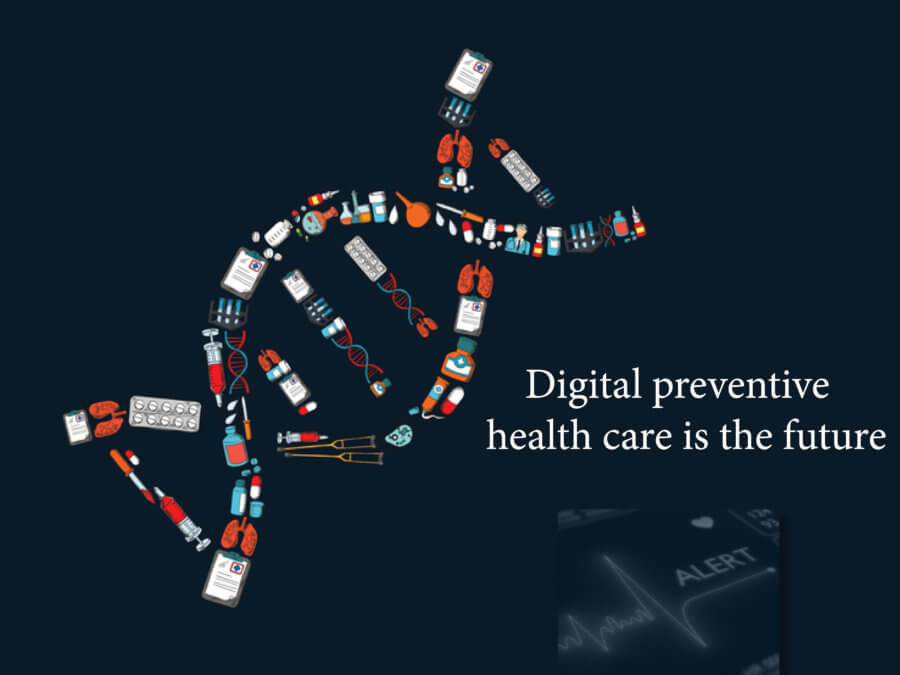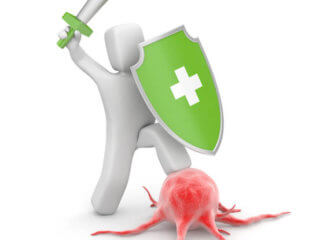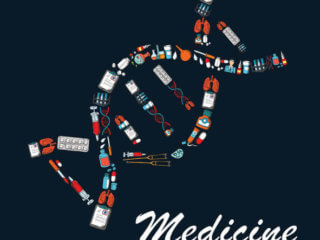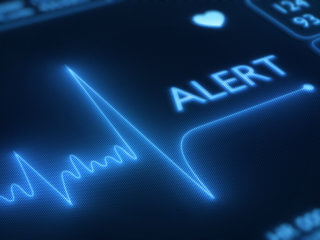Four applications of digital epidemiology in digital preventive health care
Rise of digital epidemiology in preventive health care
In traditional preventive health care, epidemiological studies play a significant role in collecting health status, pathogens, risk factors and outbreaks manually. The incorporation of this data into public health practices and clinical applications, and translation of the data back to the public occur very slowly due to the slow movement of data and information through hierarchical structures in the healthcare system.
Fortunately, the concepts of using the internet, digital smartphone applications (mHealth apps), long-distance and rural research data collection, communication through telehealth or eHealth technologies and portable gnomic sequencers have turned a new leaf in epidemiology.
When digital preventive healthcare (DPH) technologies are employed in epidemiological applications of public health, it is called ‘digital epidemiology’ (Eckhoff & Tatem, 2015). Dr Kevin Bakkar, a German scientist who perform research on digital epidemiology, defines digital epidemiology as
“the application of real-time mobile or social digital data for improving public health or preventing/minimizing disease outbreaks.”
His digital epidemiological research has been able to identify correlations between occurrence of childhood infectious disease chicken pox with a reduction in immunization, suggesting that this tool can be used not only to track disease outbreaks, but also predict causes, and potential methods of containing the outbreaks (Bakker, Martinez-Bakker, Helm, & Stevenson, 2016).
| Recommended for you | |
| How is AI transforming digital preventive healthcare? | |
| Digitization of preventive health care | Future of medicine | |
| Use of Artifical Intelligence to predict population health risks |
Applications of digital epidemiology in DPH
1. Digital pathogen surveillance in public health
Traditionally, public health agencies rely on doctors, patient surveys, laboratories and research studies to gather data and carry out surveillance on pathogens and disease outbreaks. In the case of an infectious or pathogenic disease which has the potency to cause severe global health issues and death within a short period of time; the time of detection, the first report and tracking the progression of the outbreak and responding are critical. The application of digital epidemiological approaches at this primary prevention level, therefore, reduces the time, increase the efficiency of treatment and prevents death. An article by Jennifer Gardy mentions
“Portable genome sequencing, coupled to digital platforms for epidemiological surveillance and data-sharing, could change the way we respond to outbreaks of infectious disease. But are we ready for this new model of public health response?”
regarding the use of digital epidemiology in pathogen surveillance and other public health crises (J. Gardy, 2017). Dr Nicholas Loman has been a pioneering partner in the Zeka virus outbreak analysis using portable sequencers and other digital epidemiological tools in Brazil which is now called the Zibra project. These studies provide more hope and promise to carry out more reliable, genomically-informed and real-time epidemiological surveillance of pathogens and infectious diseases globally (J. L. Gardy & Loman, 2017).
2. Digital monitoring of disease outbreaks and outbreak prediction
Internet-based health report and monitoring systems have been developed to carry out global infectious disease monitoring and generation of automated digital disease intelligence. One such internet-based health platform is the HealthMap outbreak monitoring platform (Freifeld et al., 2010; Freifeld, Mandl, Reis, & Brownstein, 2008).
In fact, this digital epidemiological platform is considered as a ‘participatory digital epidemiological’ application in DPH (Freifeld et al., 2010), because it collects data from mHealth apps regarding disease outbreaks, disease-related activities, and news reports. For example, Figure 1 illustrates top 10 disease outbreak reports in Germany during the past month from the HealthMap platform.
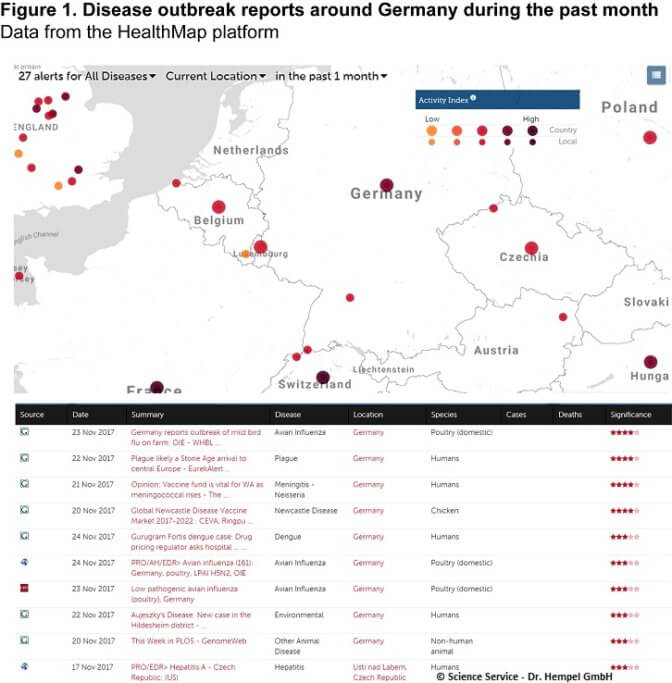
Another example of digital epidemiological web platform is BioCaster (http://born.nii.ac.jp) which uses text mining from social media, blogs, and other websites to gather geocoded information on disease outbreaks. They also send warning alerts (text or email) to their users to prevent the consequences of disease outbreaks (Collier et al., 2008).
While this informal data (rumors?) collected from the public may not be as accurate, controlled and reliable as the ones collected from doctors, labs, and researchers, they expedite the process of detection to response in a public health crisis.
3. mHealth and digital epidemiological health reporting
Apps for Rapid Epidemiological Analysis (AREA) is a concept build upon the use of mHealth apps (smartphones, personal data assistants) for health and disease reporting (Cohn et al., 2013). This is more important for health reporting and responding from rural and war areas. The mobile phones which are geotagged and tracked by GPS and many users of smartphone-based social media stay online allowing public health agencies to track them.
Tracking peoples movement and reports of outbreaks during an epidemic provide very insightful information required to contain the health risks to a minimum (Bates, 2017).
mHeath apps have also been used in community-based health reporting. For example, pandemic H1N1 infection outbreak in 2009 was monitored, and health reporting was carried out using a mHealth app called the Outbreaks Near Me (Freifeld et al., 2010). It is a smartphone app developed in constellation with the HealthMap outbreak monitoring platform.
4. Power of social media in digital epidemiology and DPH
It is only recently that the value of social media in DPH begun to be recognized over the strong ethical and personal security dilemmas raised by the public. Twitter, Facebook, WordPress and other blog sites have millions of active users who are online throughout the day and thus provide an untapped source of epidemiological data regarding disease outbreak, the severity of the outbreaks, news reports and as a media for delivering DPH messages/press releases to the public.
For instance, Twitter has been used to communicate with displaced victims during natural disasters and provide them information regarding healthcare access and ways to prevent complications (St Louis & Zorlu, 2012).
The use of social media for digital epidemiological purposes is also called ‘crowdsourcing,’ where data is collected from large populations.
One of the biggest challenges of digital epidemiological applications in DPH is their reliability as the majority of the data are collected from informal public sources. This challenge can be addressed at least to some extent by verification methods which compare different sources. Regardless of their disadvantages or drawbacks, digital epidemiology is rapidly becoming an important tool in public health where the public itself is involved in preserving their health and prevention of health crisis and death.
Image credit: www.istockphoto.com

